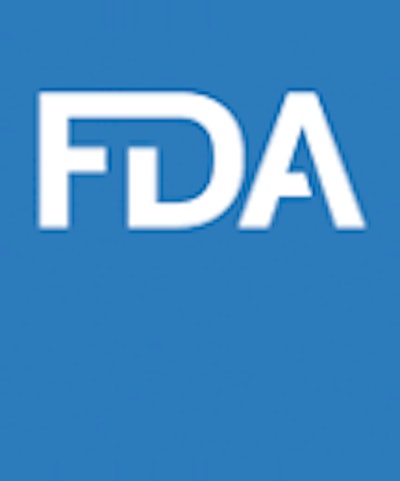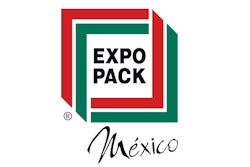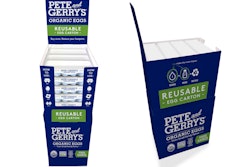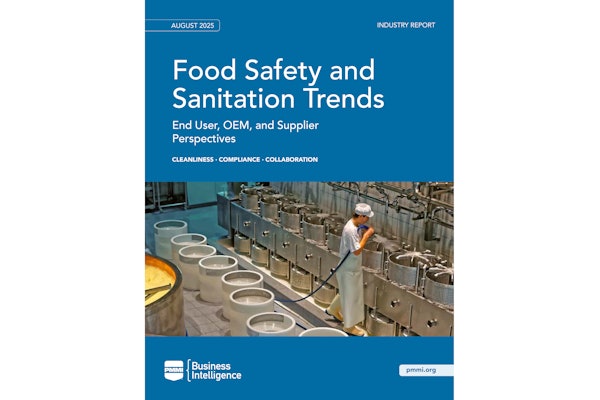
How do I maintain social distancing in my food production/processing facility and food retail establishment where employees typically work within close distances? (Updated April 5, 2020)
To prevent spread of COVID-19, CDC is recommending individuals employ social distancing or maintaining approximately 6 feet from others, when possible. In food production/processing facilities and retail food establishments, an evaluation should be made to identify and implement operational changes that increase employee separation. However, social distancing to the full 6 feet will not be possible in some food facilities.
The risk of an employee transmitting COVID-19 to another is dependent on distance between employees, the duration of the exposure, and the effectiveness of employee hygiene practices and sanitation. When it’s impractical for employees in these settings to maintain social distancing, effective hygiene practices should be maintained to reduce the chance of spreading the virus. Also, see Should Employees in retail food and food production settings wear face coverings to prevent exposure to COVID-19? (Posted April 4, 2020).
IMPORTANT: Maintaining social distancing in the absence of effective hygiene practices may not prevent the spread of this virus. Food facilities should be vigilant in their hygiene practices, including frequent and proper handwashing and routine cleaning of all surfaces.
Because the intensity of the COVID-19 outbreak may differ according to geographic location, coordination with state and local officials is strongly encouraged for all businesses so that timely and accurate information can guide appropriate responses in each location where their operations reside.
Sick employees should follow the CDC’s What to do if you are sick with coronavirus disease 2019 (COVID-19).
On April 3, the CDC released an updated recommendation regarding the use of cloth face coverings to help slow the spread of COVID-19. CDC recommends the use of simple cloth face coverings as a voluntary public health measure in public settings where other social distancing measures are difficult to maintain (e.g., grocery stores and pharmacies).
For workers on farms and in food production, processing, and retail settings who do not typically wear masks as part of their jobs, consider the following if you choose to use a cloth face covering to slow the spread of COVID-19:
- Maintain face coverings in accordance with parameters in FDA’s Model Food Code sections 4-801.11 Clean Linens and 4.802.11 Specifications.
- Launder reusable face coverings before each daily use.
- CDC also has additional information on the use of face coverings, including washing instructions and information on how to make homemade face covers.
NOTE: The cloth face coverings recommended by CDC are not surgical masks or N-95 respirators. Those are critical supplies that must continue to be reserved for healthcare workers and other medical first responders, as recommended by current CDC guidance.
FDA’s Food Code recommendations for handwashing and glove use in food service and retail food stores have not changed as a result of the pandemic. (Food Code 2017 Section 2-301.11). Per the FDA Food Code: With limited exceptions, employees may not contact exposed, ready-to-eat foods with their bare hands and shall use suitable utensils such as deli tissue, spatulas, tongs, single use-gloves, or dispensing equipment (Food Code 2017 Section 3-301.11). Gloves are not a substitute for handwashing or hand hygiene.
If your task requires direct contact with ready-to-eat food, wash your hands and the exposed portions of your arms for 20 seconds prior to donning gloves and before touching food or food-contact surfaces. Wash your hands immediately after removing gloves.
FDA-regulated food manufacturers are required to follow Current Good Manufacturing Practices (CGMPs) and many have food safety plans that include a hazards analysis and risk-based preventive controls. CGMPs and food safety plans have requirements for maintaining clean and sanitized facilities and food contact surfaces. See: FSMA Final Rule for Preventive Controls for Human Food.
- Food facilities are required to use EPA-registered “sanitizer” products in their cleaning and sanitizing practices.
- In addition, there is a list of EPA-registered “disinfectant” products for COVID-19 on the Disinfectants for Use Against SARS-CoV-2 list that have qualified under EPA’s emerging viral pathogen program for use against SARS-CoV-2, the coronavirus that causes COVID-19.
- IMPORTANT: Check the product label guidelines for if and where these disinfectant products are safe and recommended for use in food manufacturing areas or food establishments.
- We encourage coordination with localExternal Link Disclaimer health officials for all businesses so that timely and accurate information can guide appropriate responses in each location where their operations reside.
- Food facilities may want to consider a more frequent cleaning schedule.
All components of the food industry are considered critical infrastructure, and it is vital for the public health that they continue to operate.
If an employee is confirmed to have COVID-19, employers should inform fellow employees of their possible exposure to COVID-19 in the workplace but maintain confidentiality about individual employees’ identities. Ill workers should follow the CDC’s Steps to help prevent the spread of COVID-19 if you are sick.
Food production/processing facilities/farms need to follow protocols, including cleaning protocols, set by local and state health departments, which may vary depending on the amount of community spread of COVID-19 in a given area. These decisions will be based on public health risk of person-to-person transmission – not based on food safety.
For food safety, food facilities should be vigilant in their hygiene practices, including frequent and proper handwashing and routine cleaning of all surfaces.
Federal Government Resources
Businesses should consult the CDC’s Interim Guidance for Business and Employers to Plan and Respond to Coronavirus Disease 2019, which is frequently updated.
The Occupational Safety and Health Administration (OSHA) also issued Guidance on Preparing Workplaces for COVID-19 that includes information on how a COVID-19 outbreak could affect workplaces and steps all employers can take to reduce workers’ risk of exposure to SARS-CoV-2 (COVID-19).
Additional Resources
The Food and Beverage Issues Alliance has developed protocolsExternal Link Disclaimer for (1) when an employee of a firm is a confirmed or presumptive case of COVID-19 and (2) when a facility employee/facility visitor/customer has been in close contact with an individual with COVID-19. This protocol is specific to food manufacturing facilities, distribution centers, and wholesale and retail outlets.
More articles you may also like:
COVID-19 Survey: Nearly half of processors have supply chain disruptions
General Mills’ Unique Plan to Keep Up with Demand During Virus Pandemic
JBS USA Temporarily Cuts Production at Meatpacking Plant Due to COVID-19
FDA Provides Temporary Flexibility Regarding Nutrition Labeling of Certain Packaged Food
Cornell Creates COVID-19 Website for Food Industry
Molson Coors Announces Updates to Policy Related to COVID-19


























